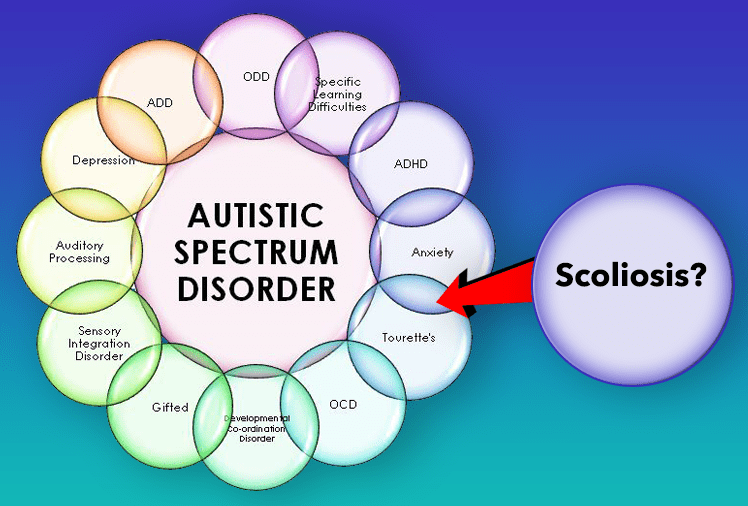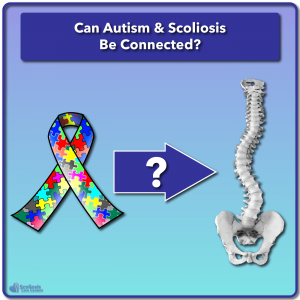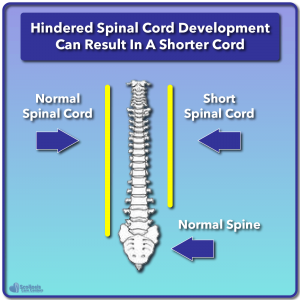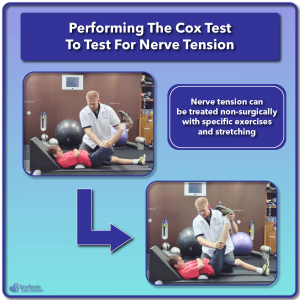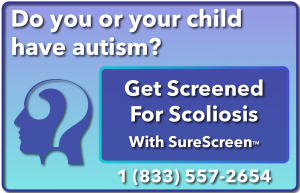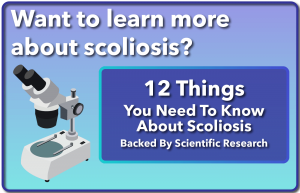Written and reviewed for scientific and factual accuracy by Dr. Austin Jelcick, PhD and Dr. Matthew Janzen, DC
Scoliosis occurs more commonly in females1; autism spectrum disorders (ASD) tend to occur more readily in males3. Based on this opposite distribution among genders, it could sound like the two conditions are completely unrelated. However, of the male clients that present to our office with scoliosis, an abnormally high percentage of them are on the autism spectrum. Our estimate is as high as one in four to one in three male scoliosis patients that we encounter in the clinic are on the autism spectrum. Obviously, this is much higher than the 1 in 37 boys reported by the CDC website. This triggers the question: Is there possibly some connection between scoliosis and autism? Why do so many of our male scoliosis patients have autism? It is also important to point out that our female scoliosis patients occasionally present with both autism and scoliosis.
A search of the medical literature yields little information on the association between autism and scoliosis. However, as you will see, autism and scoliosis actually have a lot in common and a little common sense can go a long way in understanding how they might be related. First, let’s recap the definitions of the two conditions.
What Is Autism and What Is Scoliosis?
Both are conditions that are best described as syndromes: a symptom or set of symptoms that may have a variety of causes, known and unknown. Scoliosis is not caused by just one condition and neither is autism. Autism and scoliosis have both been genetically linked to a variety of different genes that influence the development of the nervous system4–6. In fact, both are considered to be disorders of the nervous system7,7–9. The fact that a wide variety of genetic variances have been associated with autism and scoliosis further confirms that we are not dealing with just one condition, but rather a multitude of genetic conditions, all of which may create either scoliosis, autism, or both.
Scoliosis is defined by a bending and twisting deformity of the spine, such that the total bend exceeds 10 degrees. The most concerning form of scoliosis occurs in children and adolescents and rapidly worsens with growth. When a scoliosis curve exceeds 40 degrees, surgery is often recommended.
Autism spectrum disorder is defined by a lack of development of speaking ability, social empathy, and restricted or repetitive behaviors that manifest early in life, typically between 1-3 years old.
Autism affects communication; social interactions; and patterns of behavior. Scoliosis affects the spine causing both a curve (bending) and rotation. However, BOTH involve issues with the nervous system and can be impacted by some of the same genetic factors.10
How Does a Genetic Problem Cause Scoliosis And Autism?
The diagnosis of autism spectrum disorder is made when a problem exists in the nervous system that affects one’s communicative ability, social interactions, or causes restricted, repetitive patterns of behavior.
The diagnosis of scoliosis is made when a problem in exists in the nervous system that affects the spine’s ability maintain a straight alignment, resulting in a bending and twisting deformity.
The mechanisms of neurologic dysfunction that lead to autism are numerous, varied, and a bit complex. Simply put, when the nervous system’s ability to grow neurologic connections between key parts of the brain is affected, autism symptoms may manifest2. Could it be that the same genetic neurologic problem that affects brain development can also affect the development of the spinal cord?
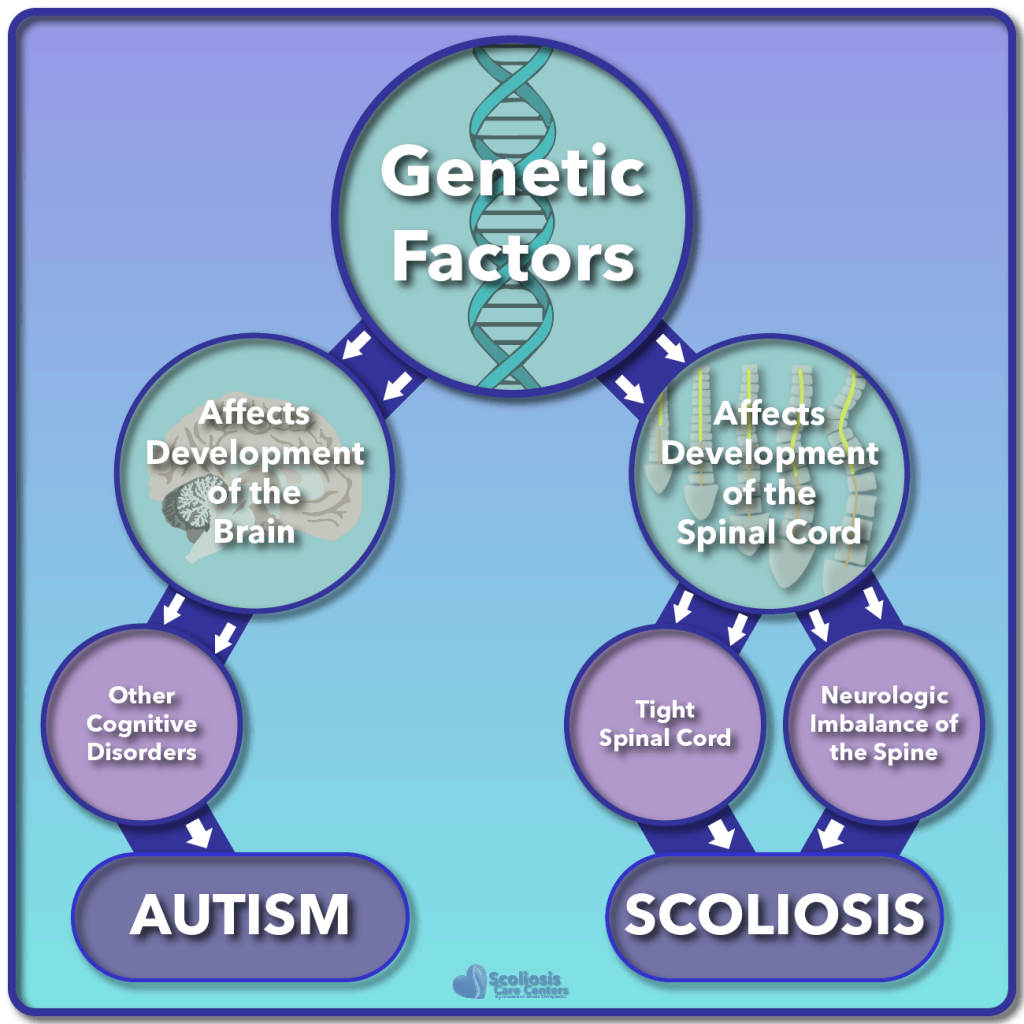
The brain and spinal cord are made from same genetic code and are part of the same system called the central nervous system (CNS). Any genetic issue that affects the brain will be therefore highly likely to affect the spinal cord. If there is a genetic problem that is capable of affecting brain development, then that same problem will likely be able to affect spinal cord development.
How Does Hindered Spinal Cord Development Cause Scoliosis?
When the spinal cord’s ability to grow is hindered, this creates a tension along the spinal canal. This tension in the spinal canal causes the spine to collapse around the spinal cord, resulting in scoliosis. (For more explanation on how that works, check out this video). Also, the spinal cord relays messages that allow the brain to tell the spinal muscles how to hold the spine erect. Loss of the ability to correctly relay these messages from the brain to spinal muscles may also contribute to scoliosis.
The bottom line is if you have autism and scoliosis, there is a high probability that the same neurologic problems that lead to the autism also lead to the scoliosis. This means there is a good chance that the scoliosis was caused by a tight spinal cord or tight spinal nerves. This condition can not only cause scoliosis, but also pain and headaches.
How Can You Tell If You Have a Tight Spinal Cord?
There are a few simple clinical exams that we perform when screening for tight nerves in a patient. One of those exams is fairly easy to do at home. We call it the Cox Test. To perform the simplest version of the Cox Test, two people are needed. The patient being tested should lie on their back, while the second person acting as the examiner, will lift one of the legs. It is important when doing this exam that the patient keeps their leg fully relaxed and allows the examiner to do 100% of the lifting of the leg. A positive sign of nerve tension occurs when the hip lifts off the ground while the leg is being raised. You can watch a video on the Cox Test here.
The good news for autism patients with scoliosis is that it is possible to non-surgically relieve the tight nerves with specific scoliosis exercises. This can allow for more successful reductions of the scoliosis Cobb angle as well as may help reduce pain and headaches associated with a tight spinal cord. If you have autism and scoliosis, chances are we can make sense out of why you have scoliosis and actually implement treatment that helps get to the root cause of the scoliosis.
Discovering and Treating Underlying Issues
We have talked about how shared genetic factors may influence both the development of autism and scoliosis; how these factors may contribute to nerve tension which in turn can result in the development of scoliosis; and how nerve tension can be screened and detected through use of something called the Cox test.
In addition to looking for and then treating underlying nerve tension through specific exercises and stretching, performing genetic testing can identify additional risk factors associated with scoliosis and provide additional insight about other issues which can affect proper nervous system development such as nutrition. Genetic variants can affect how the body produces and absorbs key nutrients, and identifying these can allow proper diet and supplementation (ie. vitamins) to help reduce any issues associated with these genetic variants.
Autism can be difficult to diagnose due to the variety of symptoms that can also be associated with other diseases/ Additionally, symptoms can vary, as well as how severe they are due to autism being a group of complex neurodevelopment disorders. Scoliosis on the other hand can be detected early through the use of proper screening, and then subsequently monitored prior to, or as a part of a treatment program.
While research is still ongoing for both autism spectrum disorder as well as scoliosis, research has proven non-surgical treatments using bracing to be effective for scoliosis. Through early detection and early intervention with conservative treatment, a spine can be straightened and surgery can prevented providing a happier and healthier adulthood.
References
- Konieczny MR, Senyurt H, Krauspe R. Epidemiology of adolescent idiopathic scoliosis. J Child Orthop 2013;7:3–9.
- Ha S, Sohn I-J, Kim N, Sim HJ, Cheon K-A. Characteristics of Brains in Autism Spectrum Disorder, Structure, Function and Connectivity across the Lifespan. Exp Neurobiol 2015;24:273–84.
- Elsabbagh M, Divan G, Koh Y-J, et al. Global prevalence of autism and other pervasive developmental disorders. Autism Res 2012;5:160–79.
- Giampietro PF. SNPping away at the genetic basis of adolescent idiopathic scoliosis. Ann Transl Med 2015;3:S26.
- Grauers A, Einarsdottir E, Gerdhem P. Genetics and pathogenesis of idiopathic scoliosis. Scoliosis Spinal Disord 2016;11:45.
- Robert C, Pasquier L, Cohen D, et al. Role of Genetics in the Etiology of Autistic Spectrum Disorder: Towards a Hierarchical Diagnostic Strategy. Int J Mol Sci 2017;18.
- Burwell RG, Aujla RK, Grevitt MP, et al. Pathogenesis of adolescent idiopathic scoliosis in girls – a double neuro-osseous theory involving disharmony between two nervous systems, somatic and autonomic expressed in the spine and trunk: possible dependency on sympathetic nervous system and hormones with implications for medical therapy. Scoliosis 2009;4:24.
- Burwell RG, Dangerfield PH, Moulton A, Grivas TB, Cheng JC. Whither the etiopathogenesis (and scoliogeny) of adolescent idiopathic scoliosis? Incorporating presentations on scoliogeny at the 2012 IRSSD and SRS meetings. Scoliosis 2013;8:4.
- Burwell RG, Clark EM, Dangerfield PH, Moulton A. Adolescent idiopathic scoliosis (AIS): a multifactorial cascade concept for pathogenesis and embryonic origin. Scoliosis Spinal Disord 2016;11:8.
- Sakaguchi, Yuri; Uehara, Tomoko; Suzuki, Hisato; Sakamoto, Yoshiaki; Fujiwara, Mineko; Kosaki, Kenjiro; Takenouchi, Toshiki (2018): Haploinsufficiency of NCOR1 associated with autism spectrum disorder, scoliosis, and abnormal palatogenesis. In American journal of medical genetics. Part A 176 (11), pp. 2466–2469.

